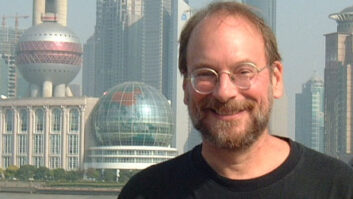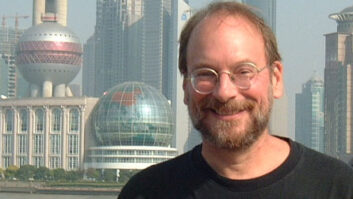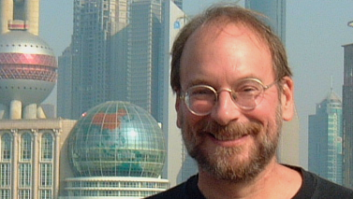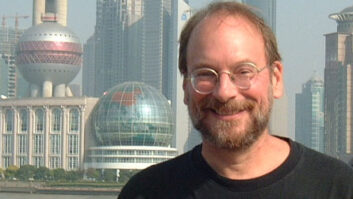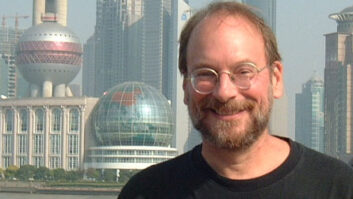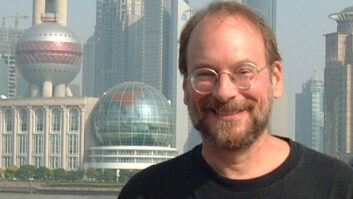Craig Chaquico is probably still best known for his two decades as lead guitarist of Jefferson Starship. Since the early ’90s, however, he has successfully carved out a new career for himself: making CDs that meld new age with light jazz. The five albums he has recorded for the Higher Octave label have placed Chaquico at the forefront of the smooth jazz market.
Chaquico, who recently moved to Oregon with his family, has had project studios since his earliest years with the Starship. His current album is being tracked on a MOTU hard disk recording system. We spoke with Chaquico about his art and the techniques he’s evolved for recording and mixing his work.
“My project studio started out as a 4-track back in the Starship days, around 1977,” he says. “I started bringing the band little ideas on tape. The recording equipment was kind of like a tumor that began to grow off of my stereo! I’d record sound-on-sound on the 4-track, and then moved onto an 8-track, and eventually a Fostex B16 tape machine. Both Acoustic Highway, which went to Number One in the adult alternative category in 1993, and Acoustic Planet, the follow-up, which also reached Number One and was nominated for a Grammy, were recorded on the Fostex.”
Because the Fostex was limited to 15 tracks (with an edge track devoted to SMPTE) and Chaquico, with his writing/producing partner Ozzie Ahlers, sequenced drums and bass, the guitarist was using lots of virtual tracks. “Performer was always a great sequencer,” he notes. “I’ve used it on all my albums. Then, when Digital Performer was released, I went for it immediately.
“I have a simple setup — anyone could go down to their local music store and duplicate it. I use DP 2.7 to track. I also have a Carvin SL40 console that I love; it has some great op amps. However, I don’t record through the board — I take my guitars straight into the computer, but I use the board for monitoring.
“Stereo delays, in particular, are critical to my sound,” he adds. “I’ll get some reverb, chorus and delays going through the console, but I don’t print any of these effects. We save all that for the mix.”
Tracking his guitar parts direct is crucial to Chaquico’s work process. “I wanted to be able to record at home and not have to worry about the sound of a washing machine, or a truck rumbling down the street. Of course, we try to soundproof, but you’re never going to get the kind of isolation that a great live room has in a project studio. When I had Washburn — and, later, Carvin — build my signature line of guitars, I spent a lot of time making sure that they sounded great going straight into a board or hard disk recorder. Monitoring through the console eliminates any latency problems, which is also a plus.”
Chaquico definitely knows his way around a studio well enough to engineer, but for a number of years he’s also enlisted the aid of a mixer, William Aura, himself a new age pioneer and a successful smooth jazz artist. “He’s got great ears for EQ,” Chaquico comments. “When I track my guitars, I’ll use Digital Performer as a recorder and as an automated console. The software’s internal mixing functions are outstanding. I’ll also throw on some effects, knowing that nothing I’m doing is being printed.”
Aura does his mixing at his own AuraVision Studios in Ojai, Calif. (near Santa Barbara). “William’s got a 24-channel Trident board that we like to mix on,” says Chaquico. “We execute some submixes in DP and then go to the Trident. We like a combination of analog effects that hang on the board, and digital effects within DP. I particularly like MOTU’s compressor/limiter. Dave Roberts of MOTU’s tech support team has turned us on to some very helpful shortcuts and gotten us out of some jams.”
Chaquico’s last CD, Panorama, was a greatest hits album that included several new cuts, and, yes, it also went to the top of the smooth jazz charts nationally. Bill Heller, a New York-based arranger, was brought on board to add loops, as well as percussion, horn and string parts. “Bill’s a DP user as well,” the guitarist says. “We sent him CDs of the rough mixes, and then he’d listen and add his parts. At this point, he’d send us MP3 files for us to check out. When we all approved, he’d send us CDs back with DP sequences and audio files.”

